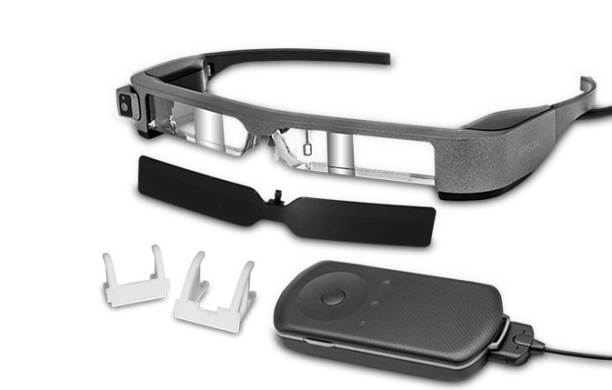
The product is the result of a partnership between Epson and DJI. The collaboration has taken the deep expertise of both companies and created a product that goes well beyond entertainment. As an enterprise solution, Epson Moverio glasses can provide more data, more safety, more consistency – and applications that we haven’t seen yet.
One of the primary functions of Moverio FPV Eyewear, to give them their full name, is to bring drone operation back to a single pilot use case instead of having multiple staff members manage a mission. “The application takes the drone flying experience from looking up and down to just looking up,” says Michael Levya, Moverio’s Product Manager.
“What’s different with glasses than with a phone or tablet? Your head is always up,” says Levya. “When you are looking for a lot of information, you don’t want to be confined to a small screen. With the sky as your screen, you are getting a lot more data in front of you – so you can get to that decision immediately.”
“The glasses mean that you can always see where the drone is,” Levya points out. “One custom application will allow you to see where it is all the time – it uses head tracking to adjust to where you’re looking.”
Looking up also means that the drone operator can be continually aware of surroundings – a big asset to safety. “In public safety applications, asset inspections, infrastructure work… these can be dangerous places. The glasses allow you to maintain awareness – they make the operator safer, more effective, and more productive.”
Levya says that expansion into the commercial market just makes sense. “Epson is making a strategic push into the enterprise across our whole portfolio. We want to offer full solutions to our customers.”
“We already provide services to so many enterprise customers – we want to offer these as an additional tool.”
The Moverio solution is ready for use. “Enterprise has strict requirements – we get it,” says Levya. ” They are ready to scale. But DJI was the ultimate vet for us – we’ve worked hard to get the product to where we are both happy with it. It’s a big endorsement for us. ”
About the specific applications for enterprise, Levya says the possibilities are endless. Any data can be added to the visual landscape. “One thing that we are building now is a simulator – an augmented reality solution for training people safely without risking equipment,” he explains. “You can train people with a controller, but put a virtual drone in the glasses.”
“We can make this purpose built for applications – It’s always extensible,” says Levya.
“We’re only scratching the surface.”
Miriam McNabb is the Editor-in-Chief of DRONELIFE and CEO of JobForDrones, a professional drone services marketplace, and a fascinated observer of the emerging drone industry and the regulatory environment for drones. Miriam has penned over 3,000 articles focused on the commercial drone space and is an international speaker and recognized figure in the industry. Miriam has a degree from the University of Chicago and over 20 years of experience in high tech sales and marketing for new technologies.
For drone industry consulting or writing, Email Miriam.
TWITTER:@spaldingbarker
Subscribe to DroneLife here.
